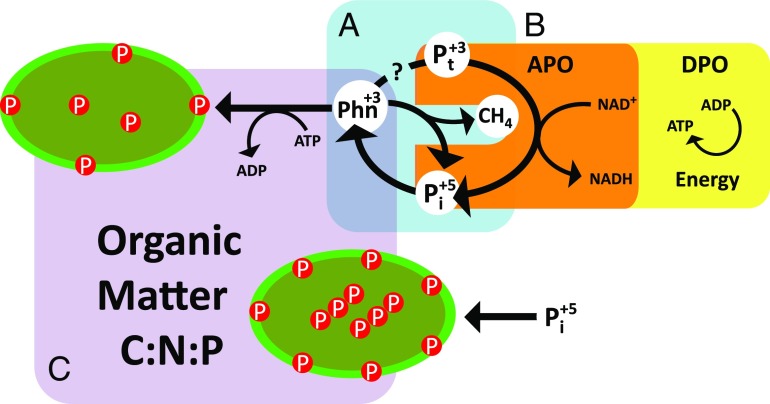Fig. 1.
Links between P redox metabolism and the biogeochemistry of organic matter. Phosphonates (Phn) play a central role in the P redox cycle. (A) Microorganisms obtain phosphate (Pi) or potentially phosphite (Pt), from the degradation of phosphonates in organic matter. The degradation of phosphonates can produce hydrocarbons—methylphosphonate produces methane, for example—that can be oxidized or assimilated by some organisms. (B) Phosphite derived from phosphonate metabolism or geochemical processes can be used during DPO or APO. DPO organisms conserve energy in the form of NADH and ATP to drive cellular growth. APO organisms expend ATP to import phosphite but may partially conserve some of this energy by regenerating NADH. Phosphonate-degrading organisms also invest ATP to transport phosphonates into the cell. (C) The energetic balance of reduced P metabolism may result in changes in the nutrient content of biomass compared with growth primarily on phosphate.

